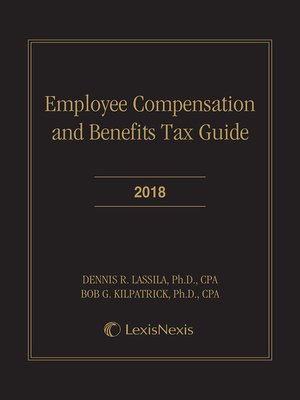
Sign up to save your library
With an OverDrive account, you can save your favorite libraries for at-a-glance information about availability. Find out more about OverDrive accounts.
Find this title in Libby, the library reading app by OverDrive.



Search for a digital library with this title
Title found at these libraries:
| Loading... |
The field of taxation of employee and executive compensation and benefits is complex, dynamic, and ever-changing. Since 1980, there have been changes to the law affecting fringe benefits, qualified plans, and other types of compensation almost every year. The Pension Protection Act of 2006 (PPA06) (PL No. 109-280) contained the most extensive changes affecting qualified deferred compensation plans since the passage of ERISA in 1974. The American Jobs Creation Act of 2004 (AJCA) (PL No. 108-357) made the most significant change to the taxation of nonqualified deferred compensation plans in over fifty years. The Tax Cuts and Jobs Act of 2017 (PL No 115-97) is widely considered to be the most extensive tax reform law since enactment of the Tax Reform Act of 1986 (PL No 99-514).
The continuing legislative, administrative, and judicial activity in the compensation taxation field has increased the breadth and complexity of the field, as well as the need for awareness of the legal aspects and practical considerations. Likewise, the need for current and comprehensive guidance with respect to compensation tax rules has increased. Accordingly, this new book provides up-to-date coverage of the federal tax laws concerning executive and employee compensation and benefits. The Patient Protection and Affordable Care Act of 2010, The Small Business Jobs Act of 2010, The American Taxpayer Relief Act of 2012, The 2015 Bipartisan Budget Act, the Protecting Americans from Tax Hikes Act of 2015 (PATH), the Tax Cuts and Jobs Act of 2017 (TCJA), and other recent tax laws and pertinent regulations, administrative rulings, and case law through March 2018 are incorporated throughout. This 2018 edition has been updated to reflect important developments since the 2017 publication, including the following:






